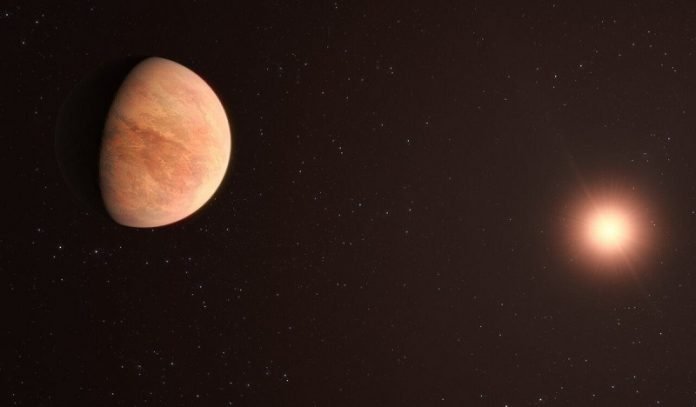
When it comes to finding exoplanets, size matters, but so does weight.
The larger and heavier the planet, the more likely they will be discovered by the current crop of telescopes.
Both the techniques to find exoplanets and the telescopes using those techniques are biased toward larger, heavier planets.
So when even the current crop of telescopes manages to find one that is about half the mass of Venus, it is cause for celebration.
That is precisely the size of the planet a team from the European Southern Observatory’s Very Large Telescope has found orbiting a star called L98-59.
Known as L98-59b, it is not the smallest exoplanet ever discovered. That title appears to be held by Kepler-37b, which is roughly between the Moon and Mercury in size.
But Kepler-37b was discovered using a different technique than L98-50b, which is the lightest planet on record so far discovered using the “radial velocity” technique of exoplanet detection.
The radial velocity technique relies on a planet pulling on its star and the star pulling on its planet. So a star “wobbles” when a world is pulling it in one direction or another.
Modern telescopes can detect that wobble for most large, massive planets, which have a more significant gravitational impact on their host star.
On the other hand, relatively light planets, such as L98-59b, don’t have as big of a pull on their host star, making them harder to detect using this method.
If their small mass is matched by small size, they might also be hard to detect using the “transit” method – another popular exoplanet detection technique that watches for dips in a star’s brightness that a planet could cause, which was used to find Kepler 37-b.
That technique was used previously by TESS to detect three planets in the L98-59 system back in 2019.
This new radial velocity research found an additional fourth planet. L98-59b was actually one of the three planets first found by TESS, but it is difficult to determine the masses of exoplanets found via the transiting method.
That is where ESPRESSO comes in. ESPRESSO is the Echelle SPectrograph for Rocky Exoplanets and Stable Spectroscopic Observations – an instrument on the VLT. In addition to being a specialist in radial transits, it can estimate water content on an exoplanet.
The first three planets of L 98-59 were good candidates for that practice, as ESPRESSO found that the first two (including L 98-59b) had some water in the atmospheres, while the third had water that amounted to 30% of its mass. Therefore the third planet is classified as an “ocean world.”
But that isn’t the only surprise from ESPRESSO’s look at the star system. It also found a fifth planetary candidate, which happens to lie in the star’s habitable zones.
The researchers could not confirm the planet’s existence in their data set, but other scientists will undoubtedly be tuning in to the system soon.
Even if the planetary candidate turns out not to exist, they will get some observational time on one of the lightest planets known so far. Hopefully, soon they will get plenty of new telescopes to do it with.
Written by Andy Tomaswick.
Source: Universe Today.



